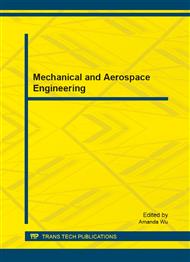p.775
p.780
p.784
p.788
p.792
p.797
p.803
p.808
p.812
A Micro Gas Turbine Fuelled by Methane-Hydrogen Blends
Abstract:
The combustion efficiency and the gaseous emission of a 100 kWe MGT, designed for working with natural gas but fuelled with blends containing up to 10% of hydrogen is investigated. A critical comparison between experimental data and results of the CFD analysis of the combustor is discussed. The k-epsilon RANS turbulence model and the Finite Rate – Eddy Dissipation combustion model were used in the numerical computations. The chemical kinetic mechanisms embedded were the 2-step Westbrook and Dryer for methane oxidation, 1-step Westbrook and Dryer for hydrogen oxidation and the Zeldovich mechanism for NO formation. The experimental data and numerical computations are in agreement within the experimental accuracy for NO emissions. Regarding CO, there is a significant deviation between experimental and computational data due to the scarce predictive capability of the simple two steps kinetic mechanism was adopted. From a practical point of view, the possibility of using fuels with a similar Wobbe index was confirmed. In particular the addiction of 10 % of hydrogen to pure methane doesn’t affect the behavior of the micro gas turbine either in terms of NO or CO emissions.
Info:
Periodical:
Pages:
792-796
Citation:
Online since:
November 2012
Price:
Сopyright:
© 2012 Trans Tech Publications Ltd. All Rights Reserved
Share:
Citation:


